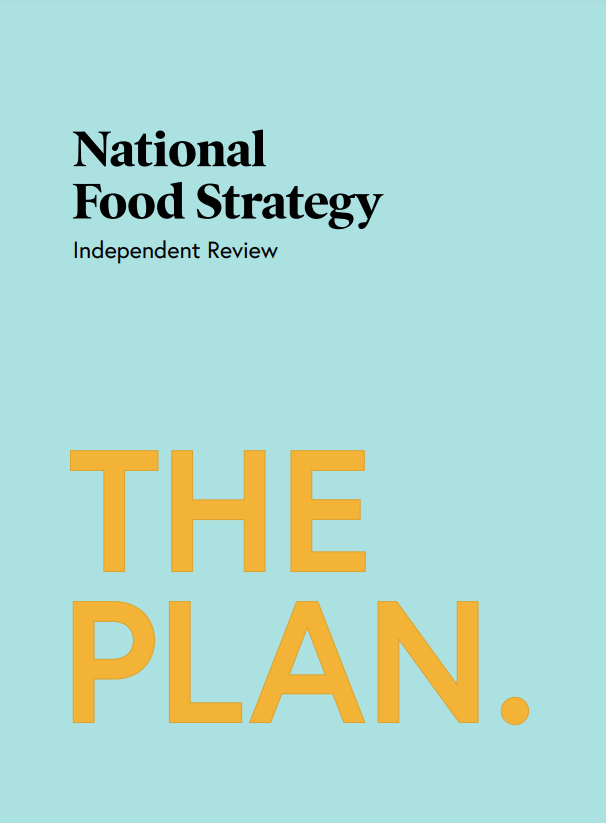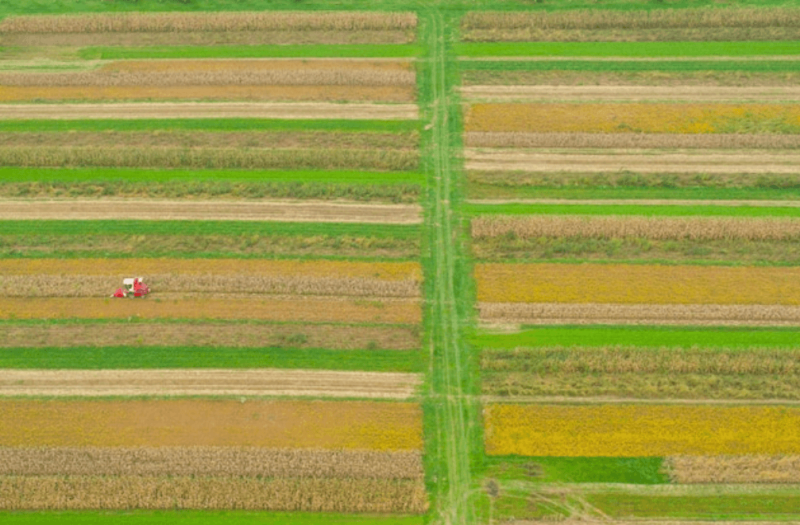Faced with global food security concerns and soaring food and energy price inflation, the UK Government seems to have woken up to the importance of having a productive domestic farming industry. But reports that one of Britain’s biggest landowners, The National Trust, is taking large chunks of productive farmland back in-hand from long-term tenants for tree planting and re-wilding, and is promoting low-yield farming on some of our most fertile soils, highlights the urgent need for a coherent land use strategy which recognises the significance of food production, writes Norfolk arable farmer David Hill.
Many have interpreted the Government’s recent Food Strategy as a welcome shift in policy direction, signalling a renewed recognition by Ministers of the strategic importance of domestic agriculture and food production. War in Ukraine and the cost-of-living crisis will have played an important part in the Government’s thinking.
So, for example, Defra’s food plan commits to ‘broadly maintain’ current levels of domestic food production, to develop a new horticulture strategy, and to invest £270 million between now and 2029 in research and innovation to improve farm-level productivity, sustainability and resilience.
 Ministers have also pledged to develop a land use strategy by 2023 which, if it follows the three-compartment approach advocated in Henry Dimbleby’s original National Food Strategy document ‘The Plan’, will also mark a positive change in policy towards the scientific evidence which supports a land-sparing rather than a land-sharing approach.
Ministers have also pledged to develop a land use strategy by 2023 which, if it follows the three-compartment approach advocated in Henry Dimbleby’s original National Food Strategy document ‘The Plan’, will also mark a positive change in policy towards the scientific evidence which supports a land-sparing rather than a land-sharing approach.
Based on the thinking of conservation scientists Professor Andrew Balmford and Professor Rhys Green at the University of Cambridge, this creative three-compartment vision for future land use — allowing room for a combination of natural habitat, low-intensity farming and high-yield, high-tech farming — follows the science and, if properly implemented, could deliver a more sustainable balance in terms of food production, resource use, nature conservation and climate change mitigation.
As Professor Balmford observed in an October 2021 article in the Journal of Zoology, most species would fare ‘least badly’ under a land-sparing approach – with high-yield production meeting demand for food from a relatively small farmed area, freeing-up space for conservation of intact habitats elsewhere in the landscape.
Building on this model in the specific context of the UK environment, the three-compartment model acknowledges that a limited number of farmland species fare better under low-intensity farming systems, hence the provision for a third compartment alongside high-yield farming and land set aside for nature.
However, the allocation of land to each of these three compartments will be the critical factor in the ultimate success of such a strategy. Until a more nationally representative picture is worked up of the optimum allocation for each compartment, the scientists involved have been cautious about estimating the relative share of each land use option.
But it is certainly not an even three-way split. Based on the detailed analysis already available for two pilot regions – Salisbury Plain and the Fens – I don’t think it would be unreasonable to suggest a ‘ballpark’ estimate of 60% high-yield farming, 25% nature conservation, and 15% low-intensity farming for the country as a whole.
And in my view it’s vitally important to have an early idea of what a science-based assessment of future land use allocations might look like, before too much of our productive land is consigned to re-wilding, tree planting or low-yield farming systems such as organic, and before too much public money is designated to reward less productive farming systems when the scientific evidence tells us to focus on high yield farming.
Indeed, the development of a coherent land use strategy – providing a science-based assessment of the competing demands and priorities placed on this precious resource – should have preceded any of the policy options being developed by Defra under the Environmental Land Management schemes (ELMs), whether in terms of low-input farming, local nature conservation or landscape recovery. In its report on ELMs in January this year, the House of Commons Public Accounts Committee criticised the UK Government for failing to set out a clear plan for land use and food production.
Indeed, two cases involving the National Trust – one of the UK’s major landowners – serve to underline the risks of pursuing particular land use options without a clearer understanding of how they might impact on wider policy aims. This is especially the case now that domestic food security and an objective to maintain current levels of food production are embedded in our national food strategy.
The first concerns reports that the National Trust is taking significant chunks of productive farmland back in-hand from longstanding tenants for re-wilding and tree planting projects. Those affected suggest that the move is financially driven, with the Trust targeting lucrative grants for landscape-scale nature recovery at the expense of its tenanted farms – and the food they have historically produced.
The Tenant Farmers Association (TFA) has described the policy as entirely wrong-headed. “It is a vanity project driven by the current media frenzy around rewilding, which in our view is not based on sound science,” TFA chief executive George Dunn told Farmers Weekly. The second example, again reported in Farmers Weekly, revealed how the National Trust’s flagship farm at Wimpole Hall in Cambridgeshire is showcasing the way to a carbon negative future for organic wheat production.
It sounds impressive from a net zero perspective, but in terms of land use policy, is this the most efficient and sustainable use of some of the country’s most productive arable farmland? Yields of the milling wheat variety KWS Siskin at Wimpole Farm were a meagre 5.19 tonnes per hectare, well under half the non-organic average, and the resulting harvest was sold at more than £100 per tonne premium over conventional. Sustainable then, but only for the privileged few.

In terms of land use, former UK food security ‘champion’ Professor Tim Benton has studied the comparative environmental impacts of organic vs. conventional farming extensively, concluding in a 2013 paper in the Journal of Applied Ecology that “the relatively low yields of organic farms may result in larger areas of land being brought into agricultural production (locally or elsewhere), at a biodiversity cost much greater than the on-farm benefit of organic practice”. With grain production per unit area 54% lower in organic compared with conventional fields, Professor Benton advised that organic production should be concentrated on more marginal land as a result.
This was perhaps an early incarnation of the three-compartment model, but it again highlights the importance of developing a coherent land use strategy which reconciles competing demands of food production, biodiversity, carbon sequestration, forestry, flood management and so on, and which does so based on sound science and evidence, not on the latest media frenzy or celebrity eco-fad.
David Hill is a Nuffield Scholar and a member of the Global Farmers Network.
This article is part of a GLP partnership with Science for Sustainable Agriculture (SSA), a new UK-based policy and communications effort offering information, comment and debate around modern, sustainable agriculture and food production. Supported by an independent advisory group of political, scientific and industry leaders from a range of backgrounds, SSA provides a platform to explain the vital role of agricultural science and technology in safeguarding our food supply, tackling climate change and protecting the natural environment. SSA stands ready to comment on and challenge unscientific positions or policy decisions on sustainable agriculture. Further information about SAS is available here.































